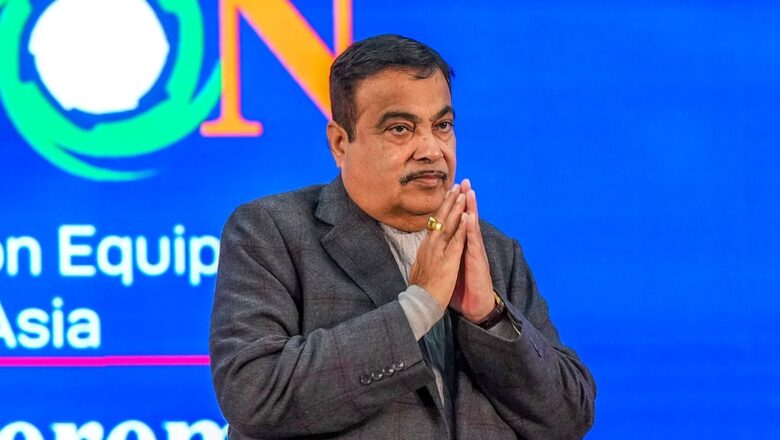
views
The process of awarding road projects has hit a new low, with just 11.3 kilometres of length awarded per day on average during the first three quarters of the financial year 2023-24. However, the Ministry of Road Transport and Highways (MoRTH) is confident that the direct awarding of projects under the Build-Operate-Transfer (BOT) model will help achieve the numbers.
Explaining the slow pace, a ministry official said things are currently in the transition phase and some policy changes are being worked upon keeping in mind the long-term need of road projects in the country.
“It is not correct to conclude that no work is being done since the pace of awarding is little slow. Things are slow because work is being done to improve the planning for road building. The ministry is working towards ‘Vision 2047’ – a large number of high-speed corridors by 2047. For that robust Public Private Partnership (PPP) in development of the road sector is important and hence planning for revival of BOT is even more crucial,” they told News18, seeking anonymity.
They added that the work on modified BOT documents is underway and is in the final stages.
THE NUMBERS
MoRTH data shows that the pace of awarding projects has dropped to more than half this year when compared to the previous year. The ministry awarded 3,111 km of projects up to December 2023 as compared to 7,263 km up to December 2022.
In 2022-23, MoRTH awarded projects of 12,376 km length. This year the aim is to award at least 10,000 km.
The pace of project awarding this year is lowest in the last few years. In 2020 and 2022, the ministry awarded around 26 km of road on average per day in the first three quarters. In 2019, it was 12.5 km per day and in 2021, it was 22.7 km per day.
The official was confident that before the implementation of the model code of conduct for the Lok Sabha polls, they will finalise BOT planning and “as soon as BOT kicks in, awarding of road projects will go up drastically. This will also improve the quality of the roads in the county”.
The ministry has already identified 53 projects 5,200 km long worth Rs 2.1 lakh crore under BOT model. Further, bids for seven projects of 387 km length worth Rs 27,000 crore have already been invited.
The ministry got a huge allocation of Rs 2.78 lakh crore in the interim budget 2024-25.
WHY BOT AND THE CHALLENGES
Currently, the majority of road projects are awarded on Engineering Procurement Construction (EPC) and Hybrid Annuity Mode (HAM). But the ministry wants to shift focus on the BOT model and is working towards that.
Under the BOT model, the ministry will offer easier terms and will also attract enhanced private partnership. “It will be a win-win situation for everyone,” the official added.
There are various challenges in implementation of BOT projects which the ministry has been working on in the last few months.
“Many initiatives were taken for the revival of BOT…BOT is not just important to get private investment but also as a long-term solution to ensure that there are no potholes on highways,” they said.
Under the BOT model, a private player is granted a concession to finance, build and operate a project for a specified period of time. The developer recoups the investments by way of user charges or tolls charged from commuters, thereby taking on a certain amount of financial risk.
In the EPC model, private players construct the road and have no role in the road’s ownership, toll collection or maintenance. HAM is a combination of EPC and BOT models.
The official further explained that the roads built under the EPC mode require maintenance quite early and its responsibility lies with MoRTH or the National Highway Authority of India. On the other hand, under the BOT mode, contractors build the road knowing that they have to take care of it for the next 15-20 years.
“We have realised that it is better for us if we go for BOT mode. For the EPC mode, we need to issue short and long term maintenance contracts depending on the needs. But under BOT, the responsibility to repair lies with the builder,” the official said.
Last month, Union Road Minister Nitin Gadkari said that they are committed to revive the BOT model and make it investment friendly and attractive for private partnerships.
“This will not only strengthen the road infrastructure but will have a ripple effect that will help to strengthen the economy, increase the employment potential and reduce the logistic cost,” he said.



















Comments
0 comment